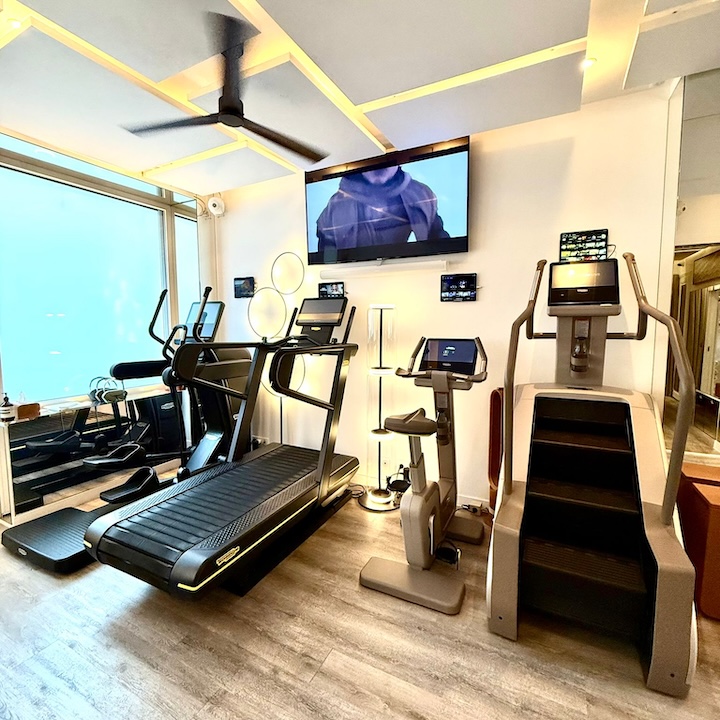A Balanced Core: Nutrition and Exercise Tips for a Healthy Midsection
When we think of a strong core, the focus often lands on visible abs, but the benefits of core health extend far beyond aesthetics. Building core strength, supported by nutrition, impacts digestion, posture, and stability, enhancing our comfort and confidence. Let’s explore how nutrition and specific exercises can help you feel better in your body, especially in your core.

Core Nutrition: The Key to a Balanced Belly
Building a healthy core starts with what you put into your body. Nutrition for core health is about choosing foods that fuel, repair, and support your muscles and digestive system without causing inflammation or discomfort.
- Fiber-Rich Foods
Fiber helps with regular digestion, which is crucial for reducing bloating and maintaining a flatter stomach. Include fruits, vegetables, legumes, and whole grains in your diet, focusing on balance to prevent excess gas or bloating. - Probiotics and Prebiotics
Probiotics, found in fermented foods like yogurt, kimchi, and kefir, support a healthy gut microbiome. Prebiotics, such as garlic, onions, and bananas, feed beneficial bacteria. A balanced gut microbiome improves digestion and reduces discomfort in your core. - Lean Proteins and Healthy Fats
Proteins aid in muscle repair and growth, essential for core development, while healthy fats like those in nuts, avocados, and olive oil help you feel satiated and support hormone regulation, which is essential for reducing excess body fat. - Reduce Inflammatory Foods
Sugary, processed foods often contribute to bloating and fat accumulation, making it harder to achieve a leaner core. Minimize these foods and focus on whole, nutrient-dense options.

Strengthening the Core: Key Exercises for Stability and Balance
Core exercises go beyond crunches and sit-ups. The best approach involves activating all layers of the abdominal muscles, improving balance, and supporting overall posture.
- Isometric Holds (Planks and Hollow Body Holds)
Isometric exercises, like planks and hollow body holds, build endurance in the transverse abdominis, the deepest core muscle layer. This improves core stability and strength, helping with better posture and reducing back strain. - Dynamic Movements (Russian Twists, Leg Raises)
Russian twists and leg raises target the obliques and lower abs, enhancing rotational strength and flexibility. Adding a weight like a dumbbell can further intensify these exercises and help build a stronger core. - Compound Movements (Deadlifts, Squats)
Squats and deadlifts work the entire body, recruiting the core for stability, which naturally strengthens the abdominal muscles while training other major muscle groups. - Stretching and Breathing
Controlled breathing and stretching reduce tension and aid in recovery. Diaphragmatic breathing, for instance, can improve core stability, posture, and relieve stress that may contribute to discomfort in the stomach area.

Developing Sustainable Core Habits for Long-Term Results
Achieving a healthier, balanced core isn’t about crash diets or extreme workouts but consistent, sustainable habits. Incorporating balanced meals, adequate hydration, regular movement, and stress management into your routine can produce lasting results. Here’s how to build these habits effectively:
- Routine Matters
Small adjustments, like adding a morning core routine or drinking a fiber-rich smoothie each day, establish a foundation for long-term core health. Over time, these actions become second nature and help avoid the pitfalls of inconsistent effort. - Listening to Your Body
Pay attention to signals such as bloating, fatigue, or soreness, which may indicate overuse or an imbalance in your routine. Modify exercises, rest when needed, and adjust your diet according to how your body responds, ensuring gradual and sustainable progress.
Hydration and Core Health
Staying hydrated plays a critical role in maintaining a healthy core. Water aids digestion, reduces bloating, and helps flush out toxins, supporting a flatter stomach. For those who struggle to drink enough water, foods like cucumbers, watermelon, and citrus fruits contribute to hydration. Avoid sugary drinks and excessive caffeine, as they can contribute to bloating and discomfort.

Prioritizing Core Health for Total Wellness
A strong, balanced core isn’t solely about aesthetics; it impacts the entire body’s alignment, stability, and performance. This interconnectedness means that investing time and effort in core health promotes overall well-being, supporting mobility, strength, and comfort in daily life. At Louis Fabre Coaching, we help clients create customized, well-rounded plans to build core strength, emphasizing sustainable changes that lead to lasting wellness.
Conclusion: A Balanced Core for a Healthier, Happier You
Feeling good in your core is more than a fitness goal—it’s a crucial aspect of well-being. By focusing on a holistic approach that integrates nutrition, targeted exercise, and consistent habits, you can achieve a balanced, strong core. Whether you’re starting your fitness journey or enhancing your current routine, embracing these principles can lead to a healthier, more confident you.
Louis Fabre Coaching offers personalized guidance, from effective core workouts to nutrition insights, helping clients create a balanced, enjoyable fitness journey. With the right support and commitment, achieving a comfortable, strong core is entirely within reach.









